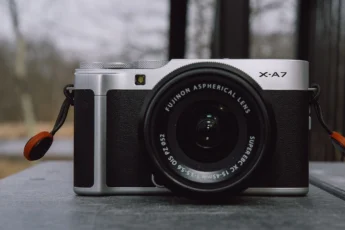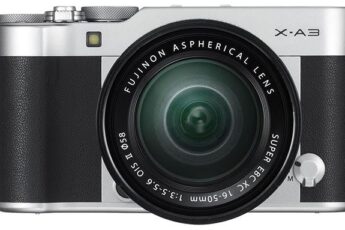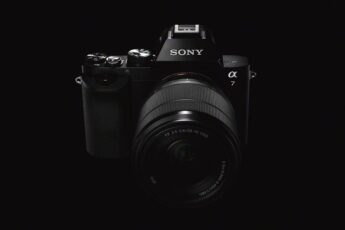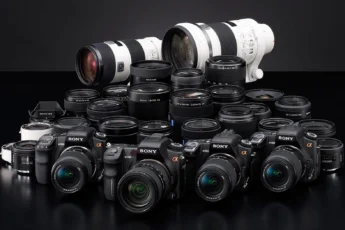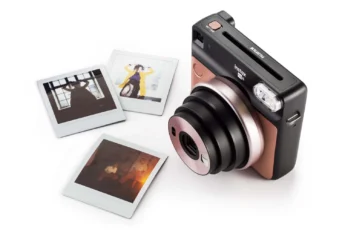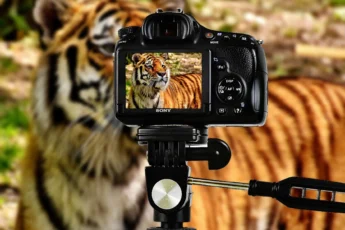The intermediate mirrorless camera tier is increasingly competitive. Panasonic, Fujifilm, Sony, and Olympus all have incredible cameras on the market today, eclipsing Canon and Nikon, the traditional DSLR manufacturers. Mirrorless cameras are different from DSLRs in that they use more advanced sensors instead of an inner mirror system. The sensor not only creates images, but also acts as the autofocus system and viewfinder image generator. As a result, mirrorless cameras are usually significantly smaller and lighter than DSLRs while having comparable image quality. However, the sensors do tend to draw more power over DSLR designs. And the smaller batteries they use in order to keep the design sleek, compounds the stamina problem.
Fortunately, the technology is starting to mature, and Fujifilm in particular has created an excellent mid-range camera. The Fujifilm X-E3 is a solid intermediate level camera in terms of design and features. Let’s have a look at this capable camera.
Short on time but ready to buy? Click here to purchase the Fujifilm X-E3.
- Technical Specifications
- Build Quality
- Image Quality
- What additional features does the Fujifilm X-E3 have?
- Film Simulation Modes
- Dynamic Range Control
- High Performance Mode
- Additional Features
- How does the Sony A7 compare to the Fujifilm X-E3?
- Advantages of the Fujifilm X-E3
- Advantages of the Sony A7
- How does the Fujifilm X-E3 compare to the Fujifilm X-T20?
- Which photographers should consider the Fujifilm X-E3?
- Conclusion
Technical Specifications
- Price: $799.00 body-only or $1,099.00 with kit lens
- Kit Lens: XF 18-55mm F2.8-4.0 OIS. “XF” lenses are Fujifilm’s higher end models. “OIS” refers to the in-lens optical image stabilization.
- Sensor: 24.3 MP sensor (APS-C sized 23.6 x 15.6 mm)
- Number of Autofocus Points: 325 total autofocus points. 169 are Phase Detection points that work by using paired autofocus sensors to analyze light received from the subject. If the light is different between the pairs, the camera knows the focus is off and adjusts accordingly. The remaining 156 are Contrast Detection points, which search for the highest possible tonal difference between image pixels.
- Built-In Flash: None, but includes external EF-X8 flash unit. The flash has an 8 meter (26.25 foot) range at ISO 100. Increasing the light sensitivity will increase the flash detection range.
- Continuous Shooting: 8 frames per second
- ISO Range: 200-12,800 with a digital drop to ISO 100, 125 and 160. The X-E3 also has digital boosts to ISO 25,600 and 51,200. Digital drops work by improving noise control and allowing the camera to shoot in especially bright light. While digital drops are useful, digital boosts unfortunately create more noise than native ISO 25,600 and 51,200 would. The pictures created at these ISO values are usually too noisy to be usable.
- Video Recording Capability: 4K 3840×2160 (30, 25, 24 fps), Full HD 1920×1080 (60, 50, 30 25, 24 fps), HD 1280×720 (60, 50, 30, 25, 24 fps)
- Image Format: JPEG and RAW. JPEG is the image format most often used for computer and device displays. It is a compressed format so some image data is lost in order to keep the file size small. RAW format contains all of the original camera image data, but the files are much larger. Also, image editing software like Lightroom or Photoshop, is needed to read and edit RAW images.
- Wireless Connectivity: Yes; Wi-Fi and Bluetooth. The X-E3 can connect wirelessly to smart devices using Fujifilm’s Camera Remote App. The app allows users to remote control the camera and import JPEGs (but not RAW images) straight to a smart device. The camera can also connect to the Instax SHARE printer to wirelessly print pictures.
- Supported Memory Cards: SD, SDHC, SDXC, UHS-1
- Battery Life (CIPA Rating): 350 images per charge
- Weight: 337 g (0.74 lb / 11.89 oz)
- Dimensions: 121 x 74 x 43 mm (4.78 x 2.91 x 1.68 in)
Build Quality
Fujifilm’s page for the X-E3 describes it as minimalist in design and lightweight. The camera certainly has a minimalist aesthetic feel, especially from the front. The top of the camera, however, has as many buttons and dials you would expect of a camera at this price and skill range. Interestingly, the X-E3 does away entirely with the Mode dial that’s found on nearly every DSLR and mirrorless camera on the market. Instead, the shooting modes are chosen with the Auto select lever on top. It has shutter speed and exposure compensation dials on top, giving it a distinct film camera flavor. Two command dials sit on both the front and the back. The front one controls the ISO value, while the rear sets the aperture for the lens.
The shutter and On/Off switch sit in between the two top dials. The X-E3 also has a hot shoe attachment for an extra flash or microphone unit. The focus mode selector (Manual/Continuous/Single Shot) is actually on the front of the camera rather than the back. And instead of a four way directional pad, the X-E3 uses a joystick to navigate menus and select autofocus points. The X-E3 also has 1,040,000 pixel LCD. The display is also touchscreen, and lets photographers select menu options, autofocus points, and control the shutter. But it is also fixed in place and does not let the user flip it up or down. The overall layout of the X-E3 is unique and very appealing to photographers looking for a different sort of mirrorless camera layout. But it might be confusing for users upgrading from a camera with a more traditional layout.
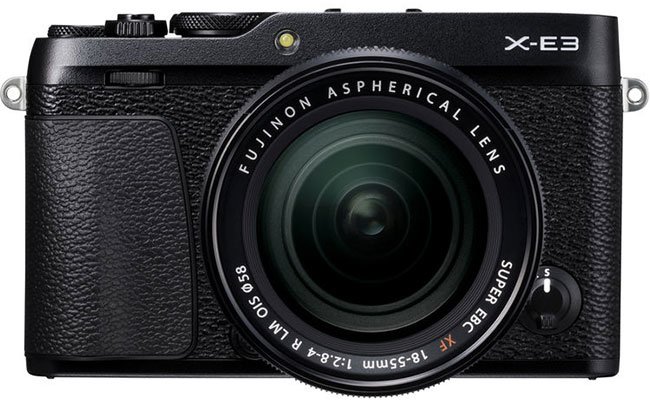
Image Quality
24.3 megapixels is plenty of image resolution. It’s actually more than most photographers need unless you regularly make large prints or posters. If you often do your own printing, the sensor of the X-E3 lets you create up to 20″ x 13″ prints at up to 300 pixels per inch. And even if you don’t make large prints, having the extra resolution is great for cropping images as needed without visibly losing too much resolution. And having a large APS-C sensor (sized 23.6 x 15.6 mm) means that the pixels themselves are larger. Manufacturers sometimes crowd large megapixel counts onto smaller sensors like Micro 4/3rds (21.6 x 17.3 mm) and 1″ sensors (15.86 x 13.20 mm). The problem with high megapixel counts on small sensors is that the pixels themselves are of a lower “quality.” Small pixels are not as good at light collection. And they can even interfere with one another, causing noise issues to appear. Overall, the X-E3 has excellent resolution for the sensor size.
Unfortunately the Fujifilm X-E3 does not have built-in image stabilization. IS is one of the best tools for helping maintain image sharpness while shooting handheld. More and more mirrorless cameras at this price range have sensor image stabilization which works with every lens you own. However, the kit lens of the X-E3 does have optical image stabilization built-in, which is better than none at all.
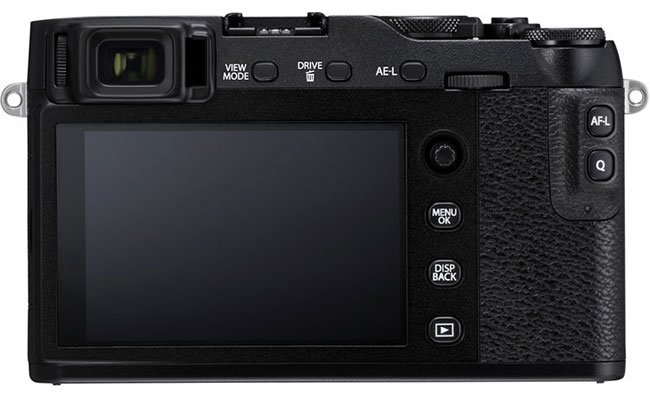
What additional features does the Fujifilm X-E3 have?
Film Simulation Modes
The has color adjustment modes similar to other cameras. Nikon, Canon, and others, tend to use the terms Standard, Vivid, etc. Fujifilm has these modes but uses its own terminology. What’s more, the settings not only create the usual scene types, but also duplicate the effects of film cameras and cinematics. There are 15 Film Simulation Modes in total and each creates a very unique flavor.
PROVIA is the Standard true to life color profile for Fujifilm. Velvia works as Vivid does by bringing out extra color saturation. ASTIA equals the Soft setting and tones down overly bright colors so they don’t clash as much with the main subject. We can use CLASSIC CHROME to create a Soft effect while deepening contrast. The result looks more like a documentary film.
PRO Neg.Hi is an overall increase in color contrast in preparation for later software processing. For a lesser Hi effect that’s well suited for softer colors like studio portraits, PRO Neg. Standard works best.
Black & White is the Monochrome setting to remove all colors from a photo. Black & White+Ye Filter increases the image contrast slightly while Black & White+R Filter gives a more drastic contrast change. Black & White+G Filter is meant specifically for human subjects as it balances out the skin tones in monochrome.
Sepia gives us a classic “Western” film look. And ACROS duplicates the look of Fujifilm’s own special Acros Monochrome film. ACROS+Ye Filter, ACROS+R Filter, and ACROS+G Filter all create the same effects as standard Black & White.
Dynamic Range Control
The X-E3 also has a unique Dynamic Range control option. Dynamic range is how bright or dark a photo can be before we start to lose detail. Bright highlights and dark shadows tend to hide details after they become intense enough. But the DR settings of the X-E3 allow for details to be preserved in scenes where the lighting contrast is high. It works by underexposing the RAW image taken by the camera. It then brightens the darkest areas of the image. As a general rule it’s better to underexpose an image rather than overexpose for the same purpose. Reason being overexposed images lose more detail than underexposed ones. Many people use this if they plan to edit photos later on the computer.
The X-E3 takes this principle and uses it in a smarter fashion. The DR setting comes in 100 (normal) and increases to 200 (1 stop of light reduction), 400 (2 stops of light reduction), and DR Auto (the camera chooses). Each stop of light is a doubling or halving of the amount of light entering the camera. The dynamic range controls are overall a worthwhile addition for scenes where the lighting is challenging to work with. Indoor architecture, landscape, and nature photographers will get extra mileage out of this option.
High Performance Mode
High Performance Mode sounds promising on paper but is pretty lackluster in practice. For starters, the manual is silent on what it actually does. Testing reveals this menu option slightly increases autofocus speed and the refresh rate of the electronic viewfinder and LCD screen. But the flip side is that it lowers the battery life of the X-E3 by 25-35%. If you have a battery grip or extra batteries and want to get every edge you can, then it may be worthwhile. Otherwise, High Performance Mode can safely be ignored.
Additional Features
This camera has a large number of autofocus points which gives the photographer many options in photo composition. The number of autofocus points can also be adjusted. You can choose either 91 focus points arranged on a 7 x 13 grid or 325 focus points on a 13 x 25 point grid. 325 points gives the autofocus system more points to keep track of your target with. But using 91 makes it easier to select points using the joystick or touchscreen. 325 points may also feel a bit unnecessary when shooting large, unmoving subjects such as a portrait photo. The X-E3 can also autofocus using a single focus point or a group in a single zone.
The X-E3 also has a number of features well suited to high speed photography. It has a decent continuous drive (burst) rate of 8 frames per second in RAW format. When using JPEG format, the X-E3 can capture an impressive 62 frames per second.
It also has 5 continuous Autofocus settings worth considering. Set 1 is Standard Continuous AF, usable when a subject is moving and you want the camera to keep the subject in focus. Set 2 increases the camera’s intelligence when obstacles might obscure the subject from time to time. The third set is optimized for subjects accelerating or decelerating, allowing the X-E3 to better compensate for the changes. Set 4 lets the X-E3 quickly focus on subjects that suddenly enter the frame. And the last set is used for subjects that are moving in a very unpredictable fashion. Action photographers will find the X-E3’s continuous drive speed and fast, customizable autofocus capabilities, incredibly useful.
Videographers will also find that the X-E3 brings quite a bit to the table. 4K resolution is mandatory at this price tier and release date, and the X-E3 does not disappoint. 30 frames per second is a great frame rate, and it also has an external microphone input and HDMI output. The Film Simulation Modes of the X-E3 also work with video recording, including 4K resolution.
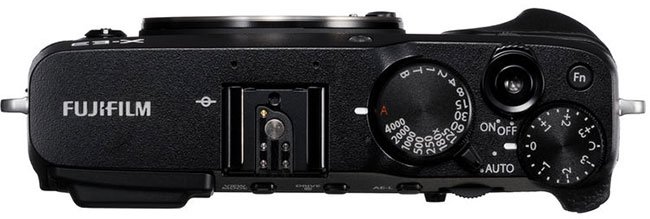
How does the Sony A7 compare to the Fujifilm X-E3?
The Sony A7 is another intermediate tier mirrorless camera that’s similarly priced to the X-E3. The two cameras have quite different designs and features, but both are very popular and worth a look. How do these two cameras compare with one another?
Advantages of the Fujifilm X-E3
Continuous Drive Speed: The X-E3 can shoot up to 8 frames per second, giving it a slight edge over the A7 at 5 fps.
Touchscreen LCD: While the X-E3’s screen is fixed, it is a touchscreen. The user can select menu items, autofocus points, control the shutter, and more. The A7 articulates up and down but is not touchscreen enabled.
Number of Autofocus Points: Here the X-E3 has a solid advantage over the A7. While 117 autofocus points is a decent selection, the X-E3 has a massive 325 AF points. Users can also opt to change the number of selectable points to 91 if 325 is more than necessary.
Video Resolution: The Fujifilm X-E3 can record up to 4K (3840×2160) video resolution. This is 4 times the resolution of the max Full HD (1920×1080) of the Sony A7.
Weight: At 337g, the X-E3 is 137g lighter than the A7, which weighs in at a much heavier 474g.
Advantages of the Sony A7
Full Frame Sensor: Full frame sensors offer a slight advantage over APS-C sensors when it comes to depth of field and image noise control. Depth of field is how much of a scene is in sharp focus. If you’re looking for the thinnest slices of sharp scenery possible, the A7 will deliver better results here.
Maximum ISO: Native ISO 25,600 is actually usable with the A7 thanks to its larger light collection zone. Native ISO 12,800 is good for an APS-C sensor, but the digital boosts to 25,600 and 51,200 are far too noisy. The Sony A7 will show much better results in low light situations.
Environmental Sealing: The Sony A7 is considered “weather safe.” Sony doesn’t outright call the A7 “weather sealed” like other manufacturers do. But the A7 is a great camera when you know there’s a chance of dust or splashes making contact with your gear. The Fujifilm X-E3 is best kept indoors if the weather is not good.
Price: The Sony A7 is around $100 cheaper with kit lens.
Lens Compatibility: While the A7 has 73 lenses it can operate with, the X-E3 only has 34 lens choices available.
Articulating Screen: The A7’s screen can move up and down, giving the photographer more angles to compose images from.
Both cameras have their pluses and minuses. Overall, the Sony A7 has a better skeleton as a camera. The full frame sensor gives major benefits to depth of field and image noise levels. And being cheaper is also worth considering. However, the Fujifilm X-E3’s touchscreen and extra autofocus points might be worth the extra money to many people. And the 4K video resolution is definitely useful for the videography oriented. Both of these cameras are excellent purchases. The intermediate tier of mirrorless cameras is one of the most competitive camera arenas at the moment. This matchup really depends on which features you find to be the most useful to your style of photography or videography.

How does the Fujifilm X-E3 compare to the Fujifilm X-T20?
The X-T20, released in the same year, is the X-E3’s strongest competitor within the Fujifilm brand. Both have 24 megapixel APS-C sensors. Both are touchscreen enabled with electronic viewfinders, all of the above additional features, and similar retail prices. The X-T20 is cheaper at $999.00 with the same kit lens. But otherwise the cameras are nearly identical. Here are a few key differences that might be important to you.
The X-E3 has a slightly smaller body. The design is sleeker and looks like most mirrorless cameras do, whereas the X-T20 has a bulky rangefinder camera design. It also has Bluetooth connectivity which uses less power than the Wi-Fi only connection of the X-T20. Photographers who do a lot of shooting in bright light will find the three digital drop settings of the X-E3 very useful. ISO 100, 125, 160 give a lot of flexibility compared to the single setting of ISO 100 for the X-T20.
But the X-T20 is no slouch, either. Having a standard Exposure Mode dial with P, M, Av, Tv, etc, is something photographers coming from a traditional layout will appreciate. It also has a tilting LCD screen for extra composition options. This comes in handy when taking selfies or shooting over a barrier. The X-T20 also has a built-in flash. The X-E3 does come with a hot shoe flash unit, so that’s not a major advantage. Once again, both cameras are worthy purchases; it really depends on which features you prioritize.
Which photographers should consider the Fujifilm X-E3?
The relatively high continuous drive rate of the X-E3, and excellent continuous autofocus modes, make it a great action camera. Videographers will find the Film Simulation modes, 4K video resolution, external microphone ports, and HDMI outputs very useful. Architecture, landscape, and nature photographers will find the Dynamic Range adjustments great for getting more details out of tricky lighting situations.
The X-E3 is too highly priced and fully featured to be considered a beginner level camera. The dial design is also significantly different from a traditional digital camera layout, and will be a bit confusing for the uninitiated. While the X-E3 does not have mandatory advanced options like sensor stabilization, it is an excellent intermediate level camera in terms of features and price.
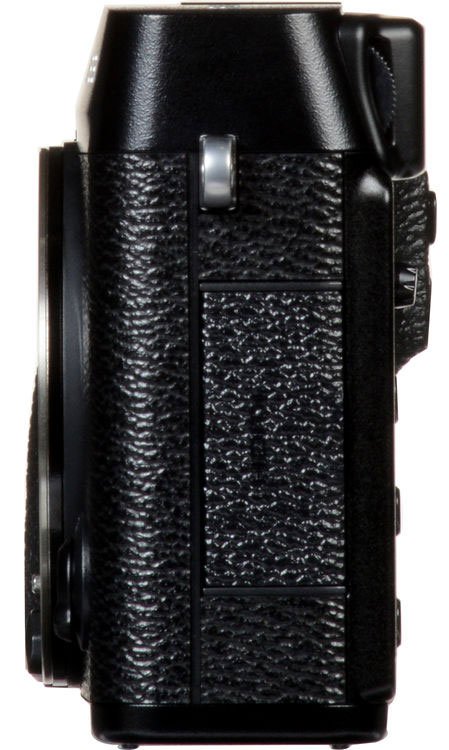

Conclusion
The Fujifilm X-E3 is overall a very powerful camera that combines excellent image quality with tons of features to make the shooting experience fun. The high number of AF points allows the user to precisely control focus areas and can even be lowered as needed. Dynamic Range control is very powerful; anyone who shoots in the outdoors or indoors without controlled lighting will get lots of use out of this. The Film Simulation modes are much more interesting than the standard color profiles offered by other manufacturers. And Videographers also have some great options as well. They can choose to use Film Simulation modes, 4K video, or both at the same time while making movies. The X-E3 has a great range of options; anyone looking at this camera should also give its cousin, the X-T20, some consideration as well. Both are wonderful additions to the mirrorless lineup.

